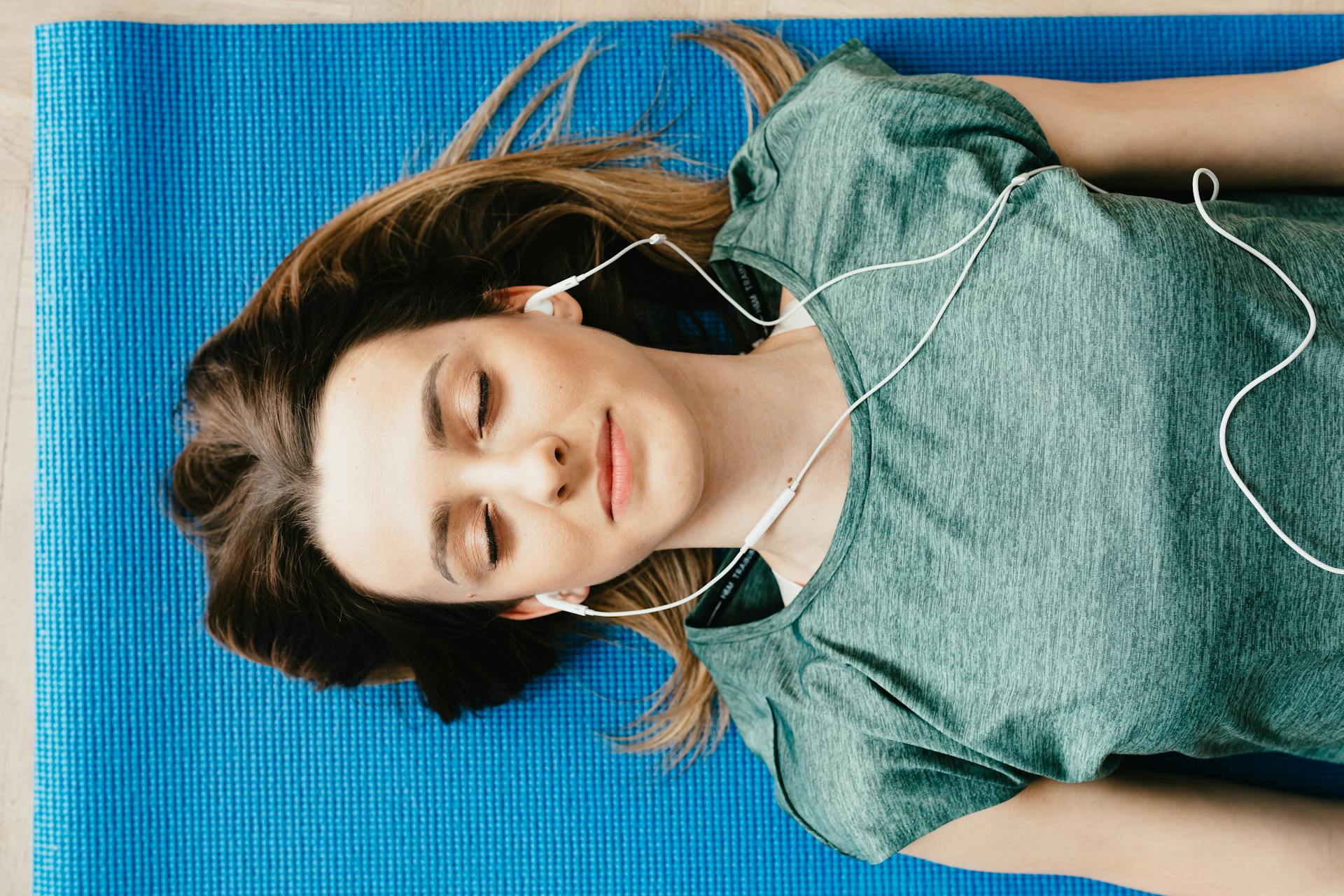If you’ve ever melted into calmness while listening to gentle rainfall or felt your racing thoughts slow down as soft music filled the room, you’ve experienced the power of stress relief audio firsthand. But beyond anecdotal experiences lies real neuroscience, physiology, and psychological research that explains why some audio reduces stress—and why some doesn’t.
Not all sound is created equal. Some audio soothes the nervous system, activates healing responses, and promotes deep rest. Others, even if labeled “relaxing,” can actually increase tension or trigger overstimulation.
In this post, we’ll dive into the science behind stress relief audio—how it works in the brain and body, what types are most effective, and which common misconceptions to avoid. By the end, you’ll know how to choose sound that genuinely helps you unwind, not just fill the silence.
🔬 What Happens in Your Body When You’re Stressed
To understand how stress relief audio works, we first need to understand what stress does to your system.
When you’re under stress—whether from a real danger or a perceived threat—your sympathetic nervous system activates. This is your “fight or flight” mode. It prepares your body to respond to danger, increasing:
- Heart rate
- Blood pressure
- Cortisol (stress hormone)
- Muscle tension
- Mental alertness (often mistaken as “racing thoughts”)
While this response is great for emergencies, modern stress—like work deadlines, emotional overload, or doomscrolling—keeps this system on far longer than it was designed for.
The goal of stress relief audio?
To shift you from the sympathetic state into the parasympathetic state—the “rest and digest” system where the body can recover, restore, and heal.
🎧 The Science of How Sound Affects the Brain
Our brains are designed to respond to sound on a primitive level. Before we had language, we used sound to detect threats or safety in the environment. That survival instinct still shapes how we react to audio today.
Here’s how sound influences stress levels:
1. It modulates brainwaves.
Your brain operates at different frequencies depending on your state of consciousness:
- Beta waves (13–30 Hz): alert, problem-solving, stressed
- Alpha waves (8–12 Hz): relaxed, meditative
- Theta waves (4–8 Hz): deeply relaxed, creative
- Delta waves (0.5–4 Hz): deep sleep
Soothing audio can guide your brain into alpha and theta states, helping you move away from overthinking and into calm.
✅ Good stress relief audio entrains the brain to slower, restorative states.
2. It impacts your vagus nerve.
The vagus nerve plays a key role in calming the body. Certain types of low-frequency sound—like chanting, deep humming, or Tibetan bowls—stimulate the vagus nerve and promote relaxation.
✅ Audio with slow, resonant vibrations can trigger real physiological calm.
3. It alters hormonal balance.
Studies have shown that listening to relaxing music can lower cortisol levels. Some types of audio also increase serotonin and dopamine, chemicals responsible for mood elevation and emotional regulation.
✅ The right sounds reduce stress hormones while boosting mood-enhancing ones.
✅ What Kinds of Audio Actually Work for Stress Relief
Let’s look at the audio types supported by research and real-world results.
1. Nature Sounds
Rainfall, ocean waves, rustling leaves, crackling fire—these sounds consistently lower heart rate and blood pressure.
Why they work:
They mimic the background hum of a safe, non-threatening environment. Nature sounds also tend to have frequencies that match theta brainwave states.
Best for:
General stress relief, meditation, background ambiance, sleep
2. Binaural Beats
Binaural beats play two slightly different tones in each ear. Your brain interprets the difference as a third “beat” and starts syncing with that frequency.
Why they work:
They facilitate brainwave entrainment, helping you shift into alpha (relaxed), theta (meditative), or delta (sleep) states.
Best for:
Sleep, deep relaxation, anxiety relief
🎧 Caution: Requires headphones and stereo setup. Some people may feel disoriented—start slow.
3. Low-Tempo Instrumental Music
Music around 60–80 beats per minute mimics the resting heart rate and encourages slower breathing.
Why it works:
It reduces physical arousal and provides a calming rhythm that the body naturally mirrors.
Best for:
Calm background during work, commuting, winding down at night
4. Guided Meditations and Body Scans
Narrated audio that walks you through breathing, relaxation techniques, or visualization.
Why it works:
It gives the overactive mind something to focus on—shifting from worry to instruction—and slows the nervous system through guided breathwork.
Best for:
People with racing thoughts or difficulty meditating in silence
5. Sound Baths, Singing Bowls, and Chimes
These create long, resonating tones that physically vibrate in the body.
Why they work:
They activate the vagus nerve, synchronize brain hemispheres, and promote energy flow. Studies show singing bowl sound therapy reduces anger, tension, and fatigue.
Best for:
Emotional release, energetic reset, deep calm
❌ Audio That Doesn’t Work for Stress Relief (and Might Make It Worse)
Not every “relaxing” playlist is actually calming. In fact, some audio types can do the opposite—increase alertness, overstimulate the brain, or trigger emotional discomfort.
1. Fast-Tempo or Rhythmic Beats
Even if the lyrics are soft or absent, beats over 100 BPM can speed up your heartbeat and increase cortisol.
Examples: Upbeat lo-fi, dance music, pop labeled “chill” but rhythm-heavy
Why it doesn’t work: Your body may unconsciously mirror the beat, entering a more alert state.
2. Emotional Movie Scores
While beautiful, cinematic music often triggers emotional storytelling in the brain—which may lead to more overthinking.
Examples: Film soundtracks with swelling strings, dramatic changes
Why it doesn’t work: It keeps the brain emotionally engaged, not relaxed.
3. Lyrical Music (with Emotional Lyrics)
Even soft songs can stimulate memories or thoughts that increase stress.
Why it doesn’t work: The language-processing centers of the brain remain active and can pull you into unwanted thought loops.
4. Inconsistent Volume Tracks
Audio that jumps from quiet to loud—like certain YouTube “relaxing” videos with ads or poor editing—jolts the nervous system.
Why it doesn’t work: Sudden changes in volume can break relaxation and re-trigger the stress response.
5. Silence for Beginners
While silence can be powerful, for those untrained in meditation, it can increase anxiety. The brain defaults to its own chatter in the absence of focus anchors.
🧠 What the Studies Say
Let’s ground all of this in evidence:
📚 Study 1: Music Lowers Cortisol
A 2013 meta-analysis in Trends in Cognitive Sciences found that music significantly lowers cortisol levels in the bloodstream, particularly instrumental and nature-based audio.
📚 Study 2: Binaural Beats Improve Sleep
A 2019 study in Frontiers in Human Neuroscience showed that binaural delta beats helped participants fall asleep faster and stay asleep longer.
📚 Study 3: Natural Sounds Aid Recovery
A 2017 study published in Scientific Reports found that nature sounds shifted the brain out of inward-focused thinking (often linked to anxiety) and into a more relaxed, outward-awareness state.
📚 Study 4: Singing Bowls Reduce Anger and Tension
Research from The Journal of Evidence-Based Complementary & Alternative Medicine found that sound bowl therapy significantly reduced tension, fatigue, and depression after just one session.
🧭 How to Choose the Right Stress Relief Audio for You
Different audio works for different people. Here’s how to find your best match:
| Goal | Best Audio Type |
|---|---|
| Falling asleep | Delta binaural beats, rain sounds, pink noise |
| Calming anxiety | Guided meditations, Tibetan bowls |
| Focusing during work | Alpha brainwave tracks, lo-fi without beats |
| Emotional overwhelm | Sound baths, nature immersion audio |
| Background relaxation | Slow piano or guitar, forest ambience |
Tip: Try each one during a low-stress moment before using it during a crisis. Your body will learn to associate it with calm.
🔁 Does Repetition Matter? Yes.
One of the most powerful features of stress relief audio is consistency. When used repeatedly, your nervous system begins to associate specific sounds with relaxation, making them more effective over time.
This is known as classical conditioning—like Pavlov’s dogs, but with peace instead of food.
🎧 If you play the same rain track every night before bed, eventually just hearing it can trigger your brain into sleep mode.
🧩 The Missing Piece: Context
Even the best audio won’t work in isolation if your environment or habits are fighting it. For example:
- Are you still scrolling your phone while listening?
- Is the room bright, messy, or noisy?
- Are you consuming caffeine or sugar late in the day?
Audio works best when paired with good sensory hygiene—dim lights, comfortable surroundings, and no competing stimuli.
Final Thoughts: Not All Sound Is Healing—But the Right One Is
Stress relief audio is more than a trend. It’s backed by brain science, nervous system responses, and centuries of human practice. The right track can lower your heart rate, reduce your cortisol, and literally retrain your brain to rest.
But to get real results, you have to choose wisely. Skip the trendy playlists with fast beats or emotional drama. Instead, go for frequencies, patterns, and tones that align with the body’s natural desire for safety, rhythm, and peace.
Try it tonight. Pick one sound. Breathe. Let go.
Because sometimes, the most powerful tool for restoring calm… is simply listening.
Up Next on StressAudio.com
- “Top 10 Binaural Beat Tracks That Actually Work”
- “The Difference Between Pink, Brown, and White Noise—And Which You Need”
- “Sound Therapy or Placebo? What the Science Really Says About Audio Healing”

